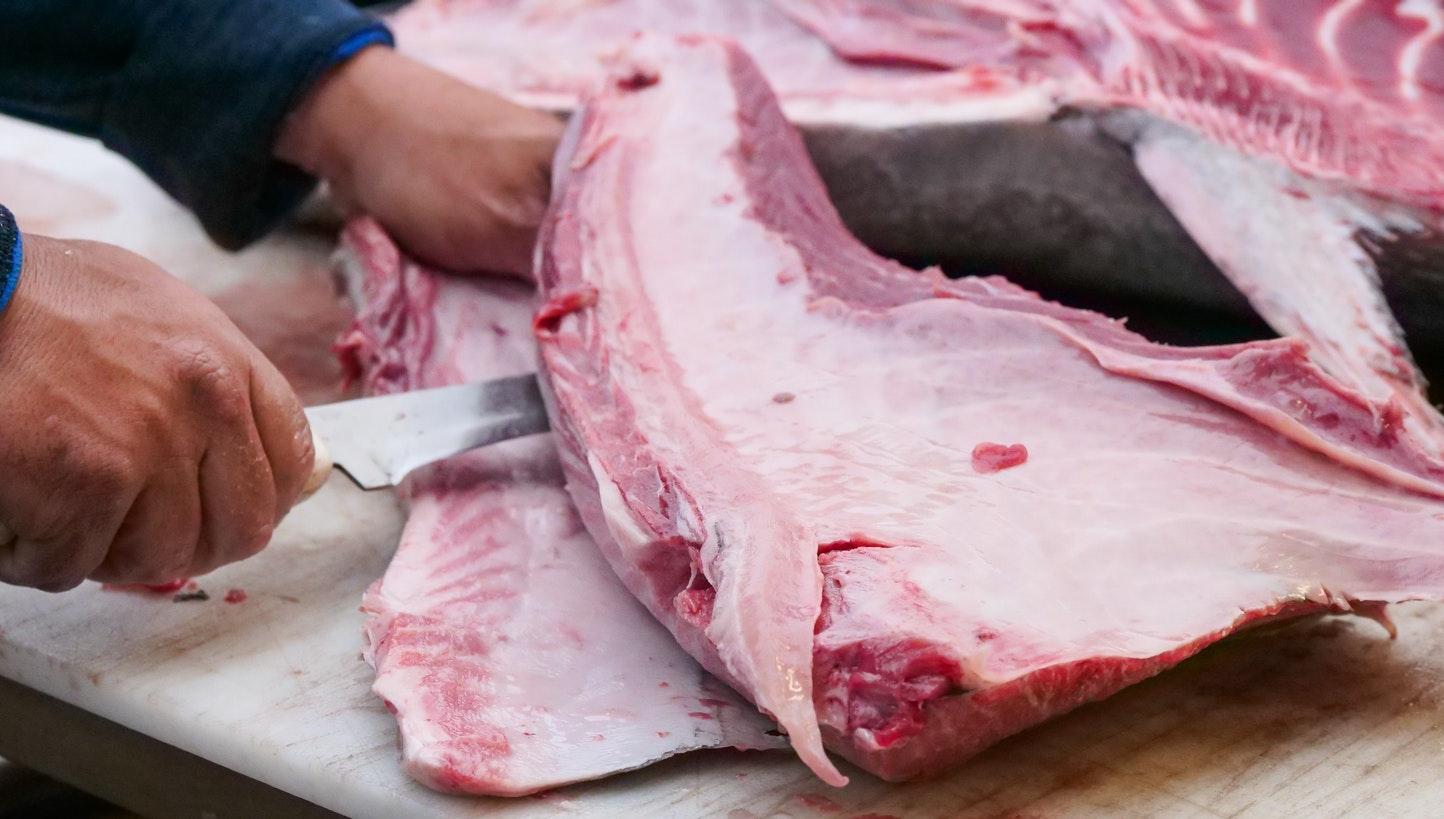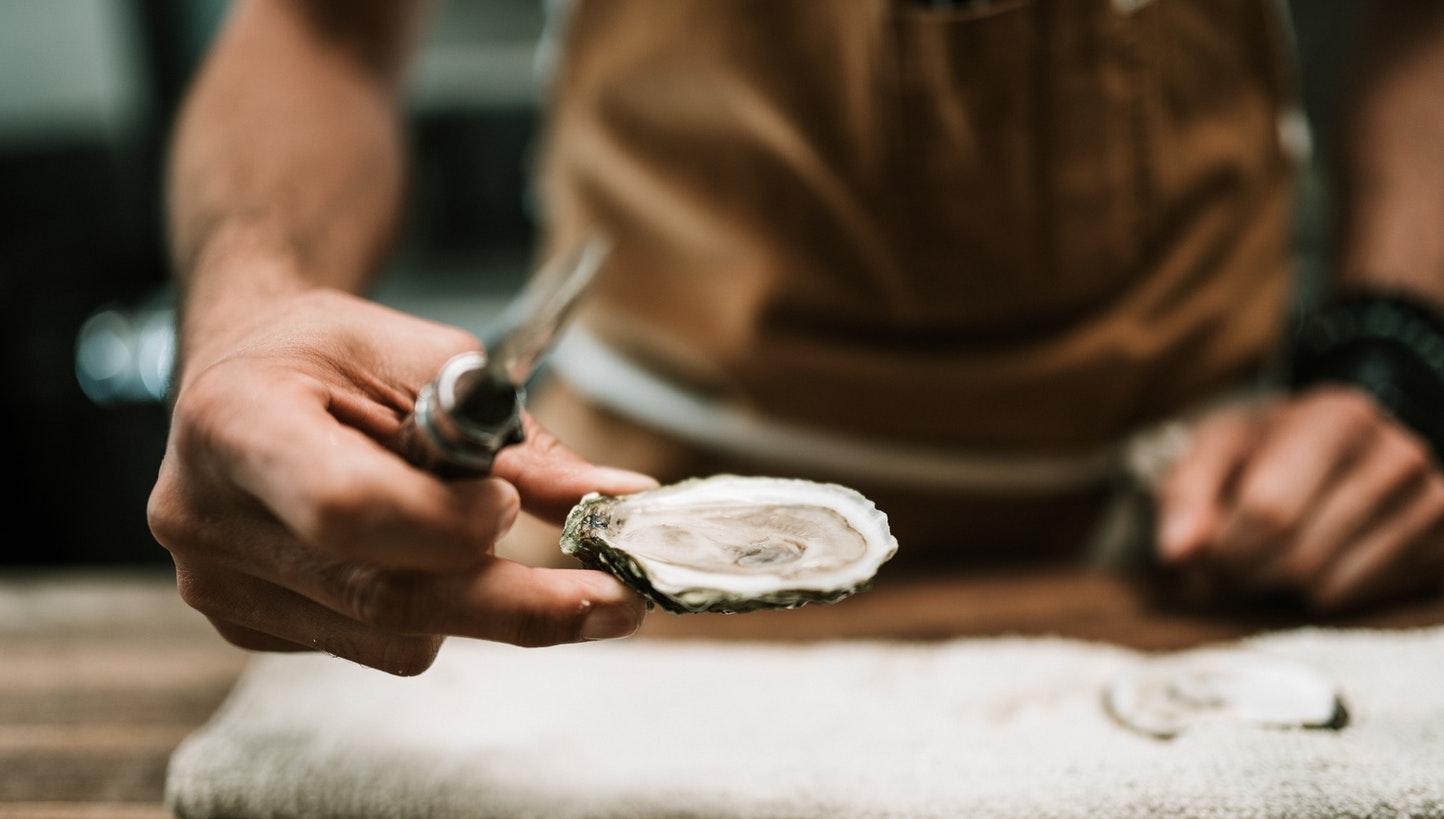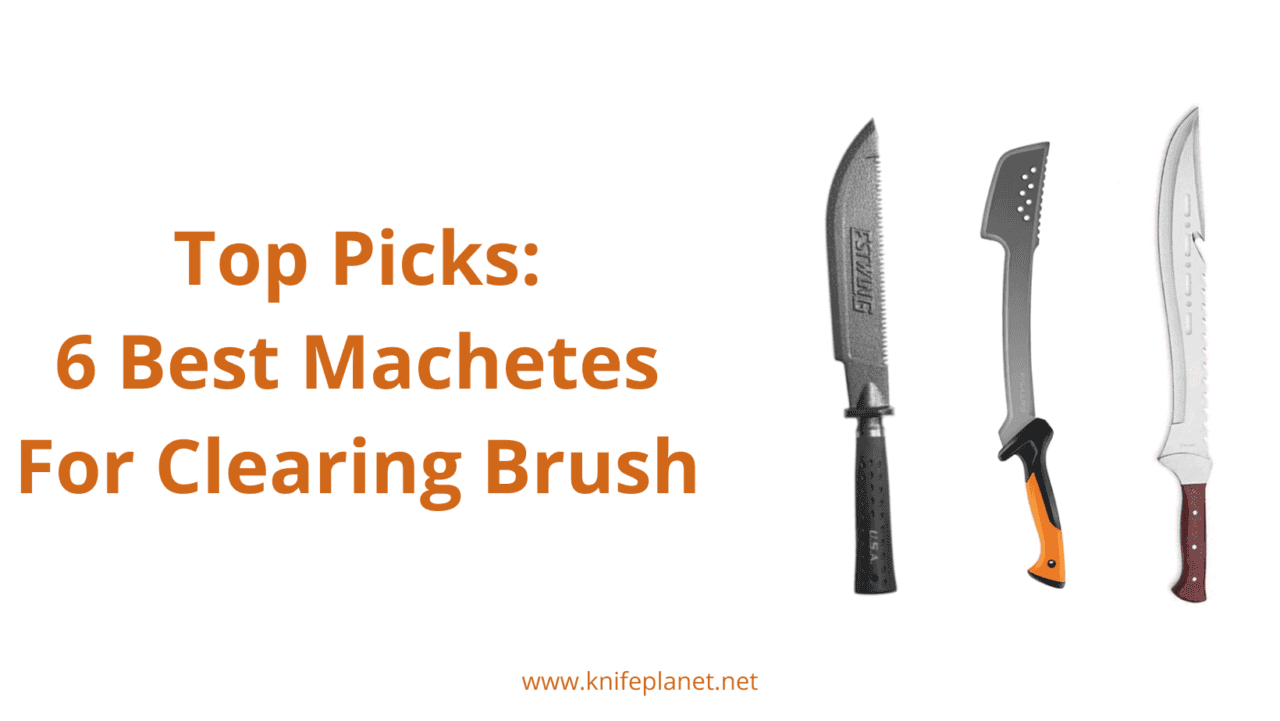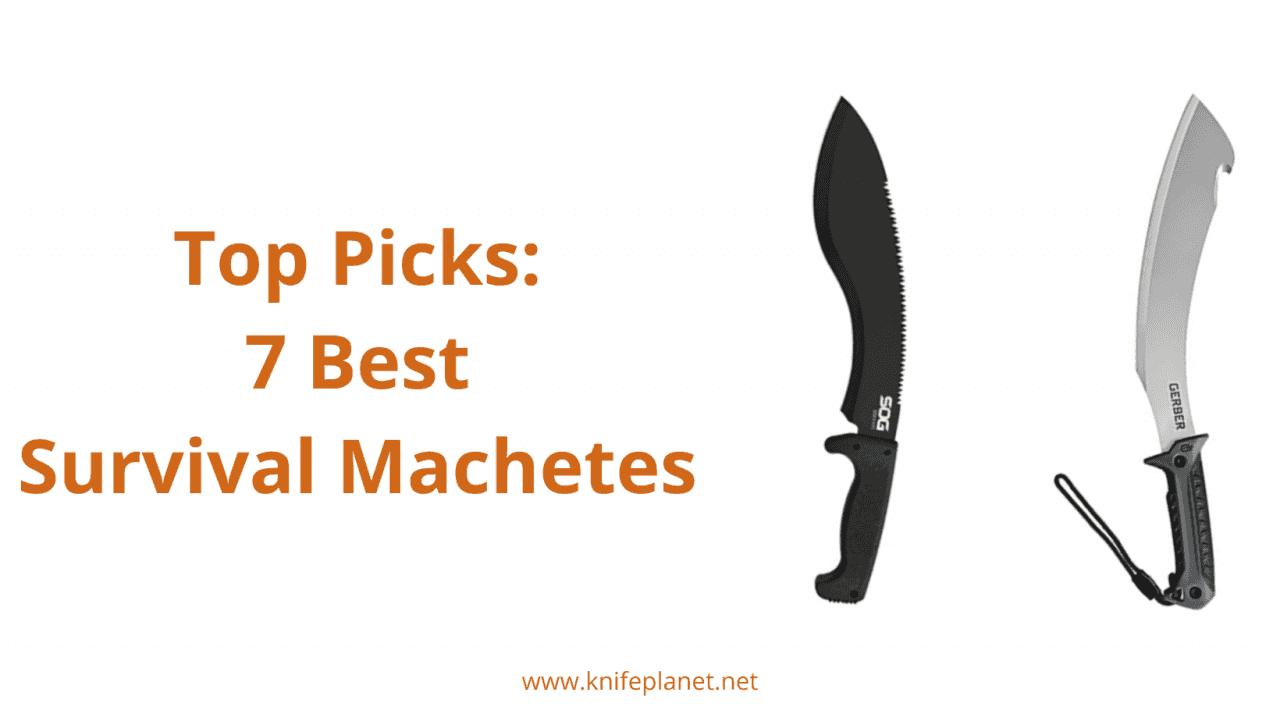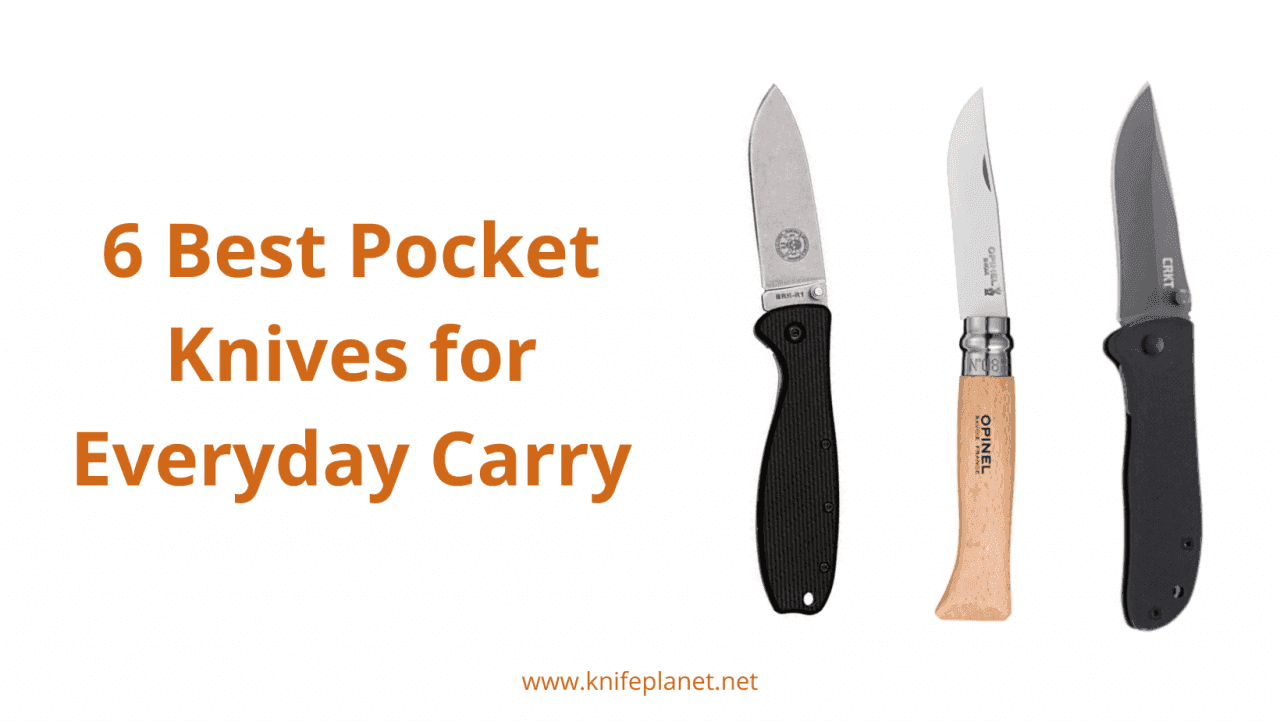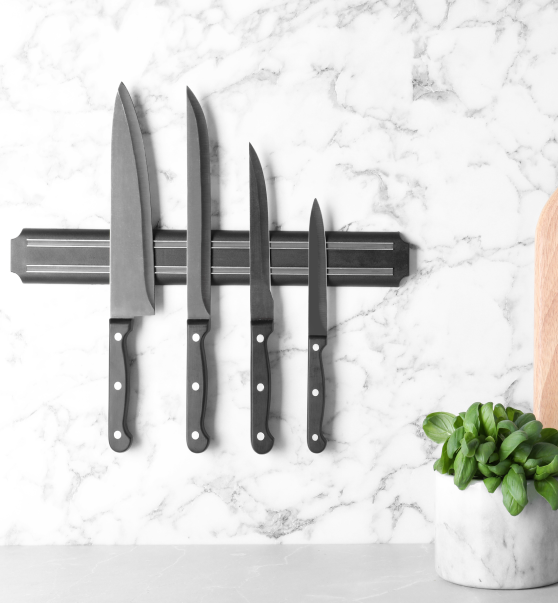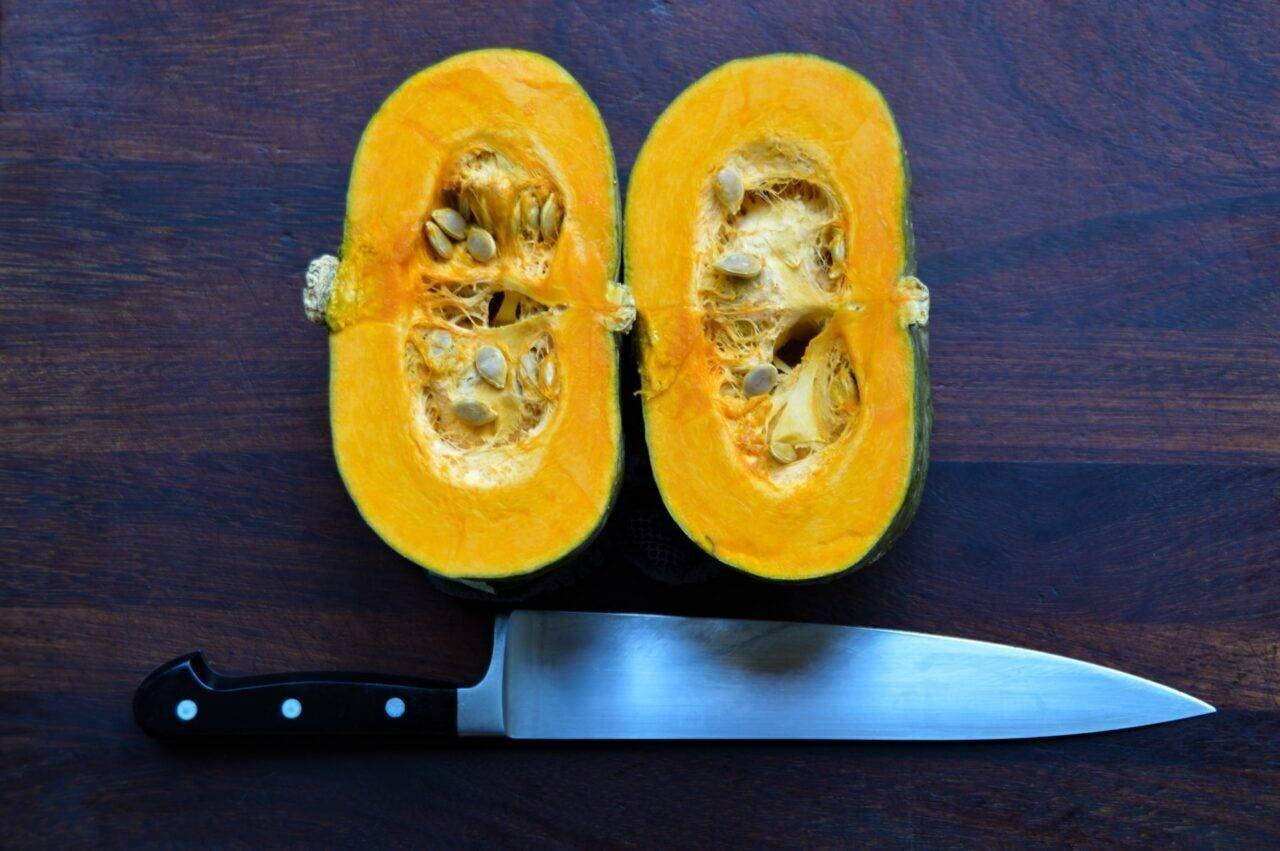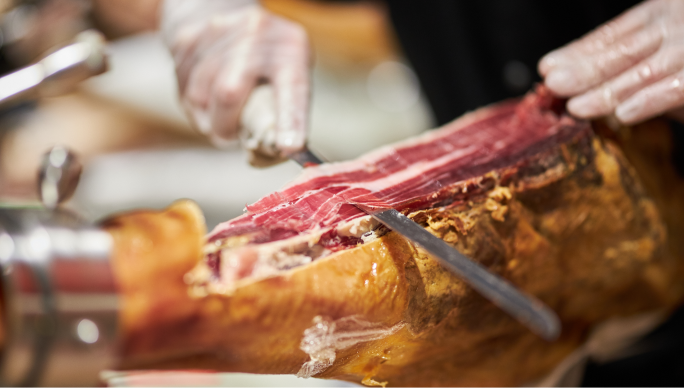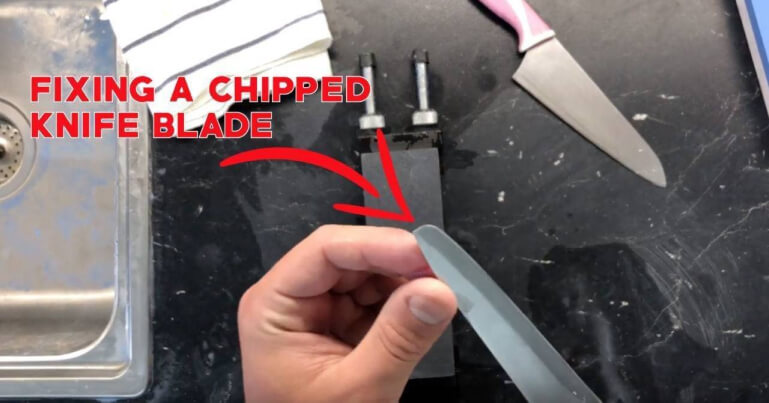
Nobody likes broken blades… but it’s a reality, sometimes our knives break right on the tip. Some people simply stop using the damaged knife, but it’s actually not that difficult to fix a chipped knife. All you need is a coarse sharpening stone, better if it’s under #200 grit, and some patience.
It usually takes around 5-10 minutes to fix a broken tip. Even faster after you learn the right technique.
VIDEO: How To Fix a Chipped Kitchen Knife
What’s The Best Fixer Stone to Take Care of Damaged Blades?
The process is not difficult to understand. I am using the coarse KnifePlanet Fixer Stone. I soak the stone in water first, and keep it wet while using it.
Here’s the coarse stone used in the video…
| RECOMMENDED SHARPENING STONE SET | GRIT | STONE HOLDER INCLUDED | DESCRIPTION |
| We’ve designed this set to be a complete, all-in-one kit ideal for beginners. You’ll be able to learn the basics and progress, without spending a fortune to get started. | 400, 1000, 3000, 8000 Grit + Coarse Flattening Stone | Yes: 1 Bamboo base + 2 Rubber stone holders | We’ve designed this set to be a complete, all-in-one kit ideal for beginners. You’ll be able to learn the basics and progress, without spending a fortune to get started. |
You need a coarse stone that is able to keep its shape while applying very high pressure. In fact, we’re not trying to raise the burr here, we’re actually reshaping the knife blade to remove the chipped end.
As you can see, this requires a lot of pressure and doing this on a 400 or 1000 grit would damage the stones badly. Any hard stone in the 100-250 grit range is a good choice for the job.
What’s the Right Sharpening Angle to Fix A Chipped Knife?
The trick is to choose a really high sharpening angle because the blade needs to have a complete different shape on the tip. I am trying to follow the chipped damaged itself with my sharpening motions, so to end up with a “new” tip. the damage gradually becomes smoother until a new round tip is there. Of course, the knife eventually is a little bit shorter but is perfectly fine and usable. You would never say it’s a damaged knife.
My advice is, don’t care too much about the precise angle you use or you should be using, just keep your goal in mind: fixing the damage. Any angle will be OK as long as it’s bringing you in the direction of reshaping the knife. Check out the video above to understand, I am doing all that’s needed to reshape the blade, higher/lower angle, weird knife positions… things I’d never do while sharpening a regular knife.
Is There a Risk to Damage the Knife even more?
You’re applying heavy pressure but if you control the sharpening motions I’d say that the chances of damaging the blade are slim. The only damage you can do is to make your knife – or at least the tip – really dull.
You need to believe in your skills and simply apply a lot of pressure. It might seem unnatural at first, but if you’re using the right stone you can rest assured it will take the pressure without breaking or deteriorating too much.
What is There to Do After Fixing the Blade?
After the blade is nicely fixed, all you need to do is sharpening the knife on a #400-1000 grit stone to create the burr. Apply heavy pressure but obviously do not use the same “fixing” angle! After fixing the knife, the blade could be really dull so it might take longer than usual to raise a burr.
Once you feel for a burr simply remove it and finish the sharpening on a higher grit stone #3000+.










